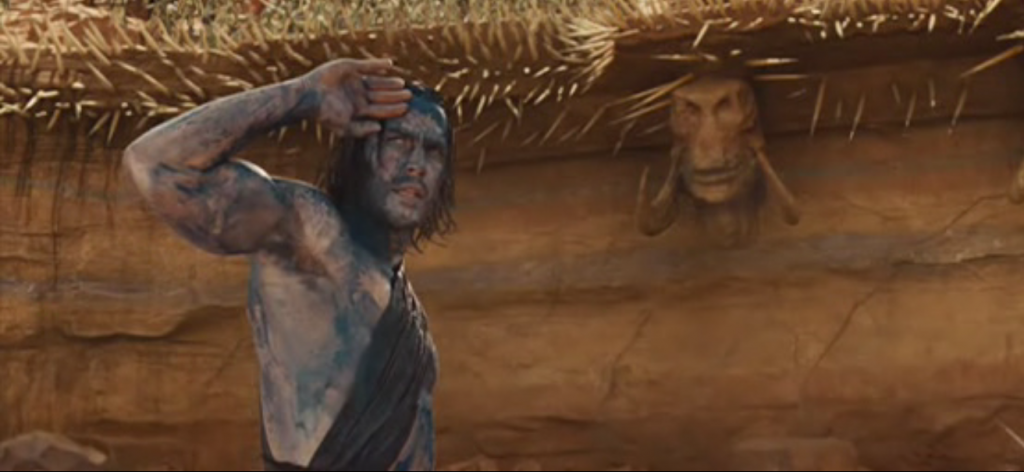
For those about to tank, we salute you.
On a recent episode of KCRW’s podcast The Business, host Kim Masters speculated that among this summer’s box office losers, Disney’s The Lone Ranger looked to be the biggest. With a reported budget anywhere from $215 – $250 million, The Lone Ranger’s current domestic total of $85 million is looking very bad. There’s little value in beating a dead… animal, even one as problematically specific as a resurrected Western, and The Lone Ranger doesn’t deserve as bad a rep as it’s been getting. In fact, it’s just the latest film in a string of disappointing live-action blockbusters from Disney, one that includes Tron: Legacy, The Sorcerer’s Apprentice, and last year’s critical punching bag, John Carter.
Based on Edgar Rice Burroughs’ Barsoom series of novels, Disney’s 2012 adaptation was a pet project of Wall E director Andrew Stanton, a lifelong fan of the novels; according to the Hollywood Reporter, John Carter was also meant to be the first entry in a series of would-be blockbusters. Like Disney’s masked cowboy, John Carter failed to amount to much at the box office. The film’s total worldwide earnings eked out just $30 million above its $250 million budget, a disappointment worsened by its release in the typically barren March movie season.
With a bland title and a relatively unknown lead, it isn’t a stretch to glance at John Carter’s marketability struggles and see how it might have bombed, especially in hindsight, and much of the critical discussion last year centered around just that. Looking at John Carter as a film now however, Andrew Stanton’s space fantasy may have been a stinker even with a killer ad campaign.
As its title makes plain, our star is former Confederate captain John Carter (Taylor Kitsch) who harbors a particular distaste for authority, whether that’s against crotchety Union Colonel Powell (Bryan Cranston) or in resisting the olive branch of Tars Tarkas (Willem Dafoe), the leader of Mars’ Green Martian clan. How exactly a strange amulet transports John Carter from the Arizona Territory to the Red Planet is a detail Stanton obscures, like countless other moments, beneath Burroughs’ Martian jargon and a dense, jumbled script. John Carter is crafted with a clear affection for the author’s work, but it’s an affection that clouds concise storytelling, well-established stakes, and really, why I should have cared about any of the computer-generated dazzle.
Apart from Kitsch and co-star Lynn Collins (as Martian princess Dejah Thoris), nobody stands out in John Carter, the remainder of its cast rounded out by attractive but indistinguishable characters, CGI or otherwise. Little separates the handsome faces of generic Dominic West and James Purefoy as shifty military types. Mark Strong, as yet another villain, plays a mysterious cloaked blue guy with world-dominating aspirations, but he’s a character solely defined by his bald head and unusual pigmentation. Even Willem Dafoe’s presence is generally wasted by the fact that, apart from facial tattoos and tusk sizes, the entire Green Martian clan looks fantastically rendered — and completely uniform. It was a shock to learn the talented Thomas Haden Church and Samantha Morton also lent their voices, as no actor in John Carter is compelling enough to elevate Disney’s repackaged “white man teaches the natives” story.
There’s a scene where our titular hero takes down two “Great White Apes” before decapitating a Martian traitor in mid-air. The music swells and the coliseum’s spectators stand and cheer, thousands of Martians applauding Carter’s Herculean efforts. It’s a triumphant moment, but it feels hollow and manufactured, as if Disney expected the audience to cheer alongside the Martians simply because it’s where they’re expected to cheer in a movie. Everything feels too manufactured, a far cry from Disney’s last truly successful live action franchise, Pirates of the Caribbean. Its first film, Curse of the Black Pearl felt organic because Gore Verbinski wasn’t directing a launchpad to additional movies. Later Pirates sequels would dial up the Johnny Depp factor, but the initial success of Jack Sparrow was a pleasant surprise from a film where co-stars Orlando Bloom, Keira Knightley, and Geoffrey Rush received top billing, too. Contrary to Dead Man’s Chest, which Disney wouldn’t greenlight for an entire year, the Mouse House may have counted their Tharks before they hatched, discussing plans for a John Carter sequel on opening weekend.
Indebted to Stanton’s reverence for the material and Edgar Rice Burroughs’ original vision, John Carter feels so informed by a larger world it’s as if the film is only waiting around to make money and tell more adventures. Giving Disney the benefit of the doubt, that same expansive source material may have played a part in choosing to start a Lone Ranger franchise from over 80 years of radio and television stories. Mining that material however, is dependent on connecting with an audience, a feat neither Lone Ranger nor John Carter seem to have mustered.
